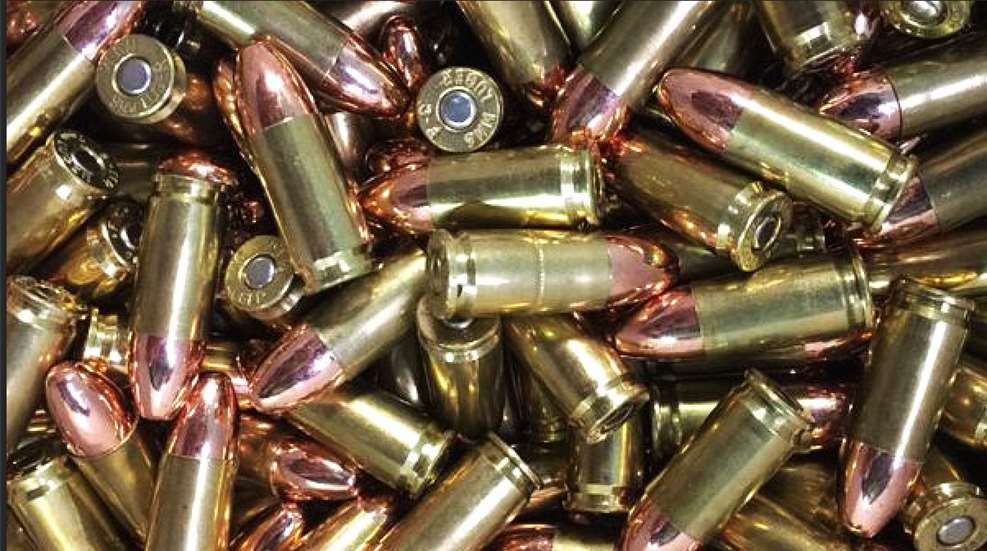
The 9 mm cartridge is the dominant round today for personal protection, competition, law enforcement and military use. This can be attributed to the cartridge’s ballistic performance, relatively low recoil and the ammunition capacity of the firearms that are chambered for it. There are three sizes of 9 mms, though, from which consumers can choose. This means that buyers need to educate themselves on these cartridges—and their differences.
Since the three sizes of 9 mm are not interchangeable, using the wrong ammunition in your 9 mm firearm can have disastrous consequences. Always use only the cartridge for which your firearm was designed. The three main sizes of 9 mm cartridges are the 9x17 mm, 9x18 mm, and the 9x19 mm. To add to the confusion, each of these cartridges has multiple names. As a shooter, you should know the different sizes so you are able to make an educated choice for the best firearm that meets your needs. You also must know the correct ammunition to use in the firearm you choose.

9 mm Parabellum, 9 mm Luger & 9x19 mm NATO
The 9 mm Parabellum round is probably the most popular handgun and submachine gun cartridge ever produced. The 9 mm Parabellum was developed in 1901 by firearms designer Georg Luger. This popular cartridge is an improvement over one of his earlier designs. In 1898, Luger introduced the 7.65x21 mm fired from the Borchardt C-93 pistol. The German military was not happy with the 7.65x21 mm cartridge and wanted something larger in diameter with better terminal performance. This was the catalyst that tasked Georg Luger to find a better pistol cartridge.
George Luger’s 7.65x21 mm (or .30 Luger) cartridge was a rimless, bottle-necked round. Luger took this round, removed the neck, and widened the case, resulting in a tapered, rimless cartridge in 9 mm. Officially this cartridge was a 9x19 mm (the latter is for the case length in millimeters) but was named the 9 mm Parabellum and adopted by Germany in 1908. The designation Parabellum is derived from the Latin motto, Si vis Pacem, para bellum—"If You Want Peace, Prepare for War.”
In 1913, the 9 mm Parabellum cartridge was named the 9 mm Luger in the United States by the Society of American Manufacturers of Small Arms and Ammunition (SAMSAA). SAMSAA did not want to designate this cartridge as the 9 mm Parabellum because there was already another firearms manufacturer was using “Parabellum.” Because of this, SAMSAA wanted to designate this cartridge the 9 mm Luger, in honor of its creator. In 1926, SAMSAA was replaced by the Sporting Arms and Ammunition Manufacturers’ Institute (SAAMI), which we refer to now for recommended ammunition specifications and pressures.
The modern military version of the 9 mm cartridge is the 9 mm NATO. The 9 mm NATO was adopted in 1962 and is loaded with higher pressures than the other 9 mm cartridges. Even though the 9 mm Parabellum, 9x19 mm, 9 mm Luger and 9x19 mm NATO are interchangeable in terms of dimensions, the 9 mm NATO should be fired out of only modern pistols manufactured after the 1962 introduction date. These events are why we use the names for the most common 9 mm cartridges as the 9 mm Parabellum, 9x19 mm, 9 mm Luger and 9 mm NATO.
.9x18 mm & 9 mm Makarov
The 9x18 mm had its beginnings in 1936 Nazi Germany. The cartridge was developed Gustav Genschow & Co. for use by the German Luftwaffe. This cartridge was designated as the 9x18 mm or 9 mm Ultra. The 9x18 mm Ultra was never officially adopted by the Luftwaffe and faded out of use. (Wikimedia image creative commons license)

The modern 9x18 mm cartridge was developed in 1946 by Boris V. Semin. In 1947, Nikolay Fyodorovich Makarov developed the Makarov PM pistol around the 9x18 mm cartridge developed in 1946. In 1951, the Soviet Union adopted the 9x18 mm cartridge and the Makarov PM pistol as the official round and handgun for its military. When the Soviet Union adopted this cartridge, the 9x18 mm was commonly referred to as the 9 mm Makarov. After its acceptance, the cartridge quickly spread throughout the Eastern Bloc countries.
The 9x18 mm Makarov cartridge is a rimless, tapered round. The 9x18 mm Makarov cartridge contains a larger diameter bullet than other 9 mm rounds. This is because of the way the 9x18 mm is measured compared to other 9 mm bullets. Rifled barrels have lands and grooves cut into the barrel for performance. The lands are the raised parts, and the grooves are the cut out “valley” parts. Most calibers are measured between the lands, or high point to high point. The 9x18 mm Makarov bullet is measured between the grooves, or low point to low point. By measuring between the low points, you get the most precision measurement. As a result, the 9x18 mm Makarov measures 9.27 mm (0.365 inches) and other 9 mm bullets measure 9.17 mm (0.355 inches).
If you have a 9 mm Makarov (9x18mm), you must shoot 9mm Makarov ammunition out of it.
9x17 mm, 9 mm Kurz, 9 mm Short, 9 mm Browning, 9 mm Corto & .380 ACP
The 9x17 mm was developed in 1908 by John Browning for Colt and its Pocket Hammerless pistol. It was initially developed and marketed as the .380 ACP (Automatic Colt Pistol). There are many names for the for the .380 ACP cartridge. These include 9x17 mm, 9 mm Browning, 9 mm Browning Corto (Court), 9 mm Short and 9 mm Kurz. All these cartridges are interchangeable and can be safely shot out of any firearm with one of the common designations for this chambering.
The 9x17 mm is a straight-wall, rimless cartridge. The bullet diameter is 9.00 mm (0.355 inches). Being a true rimless cartridge, the headspace is at the case mouth for better accuracy. Most firearms in .380 utilize blowback operation. This allows for the barrel to be fixed to the frame for increased accuracy as opposed to the short-recoil operation pistol that requires the barrel to tilt up to unlock the locking lugs when cycling—thought there are some locked-breech, recoil-operated guns in the chambering.
The 9x17 mm—compared to 9 mm Luger—is a fairly low-pressure cartridge. It can be ideal for personal protection, especially those who have a problem with recoil. Even though the 9x17 mm is not as powerful as a 9 mm Luger, it was used by many European militaries and law enforcement agencies. It was considered a moderately powerful service duty cartridge and was used by some countries up until the 1970s. This round was eventually replaced by the more powerful 9 mm Luger cartridge in most police agencies, although it has something as comeback here in the United States with concealable personal protection guns.















































